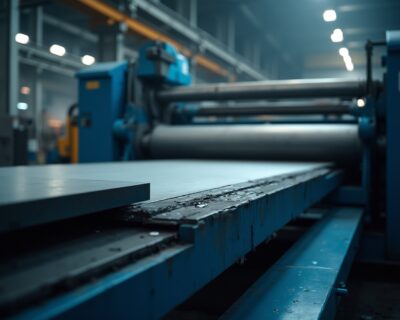Blog

Understanding Permalloy Foil: An In-Depth Tutorial on Properties and Applications
Overview
The article focuses on the properties and applications of permalloy foil, a nickel-iron alloy known for its high permeability and low coercivity, making it ideal for various industrial uses. It highlights its significance in sectors such as electronics and automotive, while also discussing manufacturing techniques, market trends, and compliance with quality standards, all of which are crucial for procurement managers to ensure effective sourcing and application of this material.
Introduction
In the dynamic landscape of materials procurement, understanding the fundamental properties and applications of specialized alloys like Permalloy foil is essential for strategic decision-making. Comprising primarily nickel and iron, this alloy boasts exceptional magnetic permeability and low coercivity, making it a cornerstone in various high-tech applications across industries such as electronics, automotive, and defense.
As the market for nickel-iron alloys is poised for significant growth, procurement managers must navigate not only the intricacies of material specifications but also the evolving market trends that influence sourcing strategies. This article delves into the diverse applications of Permalloy, the manufacturing techniques that optimize its performance, and the critical quality standards that ensure compliance.
Furthermore, it highlights the cost factors that shape procurement decisions and anticipates future trends that will drive demand for this indispensable material. By equipping themselves with these insights, procurement professionals can secure a competitive advantage in an increasingly demanding marketplace.
Fundamental Properties of Permalloy Foil
The composition of permalloy foil primarily consists of nickel and iron, with the nickel content usually ranging from 78% to 80%. This specific composition is critical, as it confers the alloy with remarkable permeability, enabling it to effectively concentrate and direct fields. The high electrical resistivity coupled with low coercivity further enhances its suitability for applications that require the reduction of eddy currents, thereby minimizing energy losses in magnetic systems.
Importantly, this alloy also exhibits a low temperature coefficient of permeability, ensuring its performance remains stable across a range of operational temperatures. For procurement managers, understanding these essential characteristics is not merely theoretical; it is crucial in making informed and strategic choices that impact the performance of resources in their respective application contexts. The Nickel Molybdenum Iron Alloy, known for its superior corrosion resistance, excellent mechanical properties, and high-temperature stability, is particularly relevant in this regard.
As the nickel-iron alloys market is projected to grow at a CAGR of 5.11% from 2024 to 2033, understanding the complexities of materials such as permalloy foil becomes increasingly vital in maintaining competitive advantage. The promising outlook for this market highlights the ongoing demand for high-performance substances. Furthermore, the aerospace and defense sectors employ nickel-iron alloys for their excellent strength-to-weight ratio and thermal stability in essential components such as landing gears and engine parts, further showcasing the practical uses of these substances.
We invite you to explore our extensive catalog of products at DOMADIA, where our legacy of sourcing superiority since 1952 ensures that your procurement needs are met with reliability and excellence. As Clemens Riefler noted, the precision of alloy compositions, as demonstrated in the development of the Invar pendulum, remains essential for achieving accuracy in advanced applications.
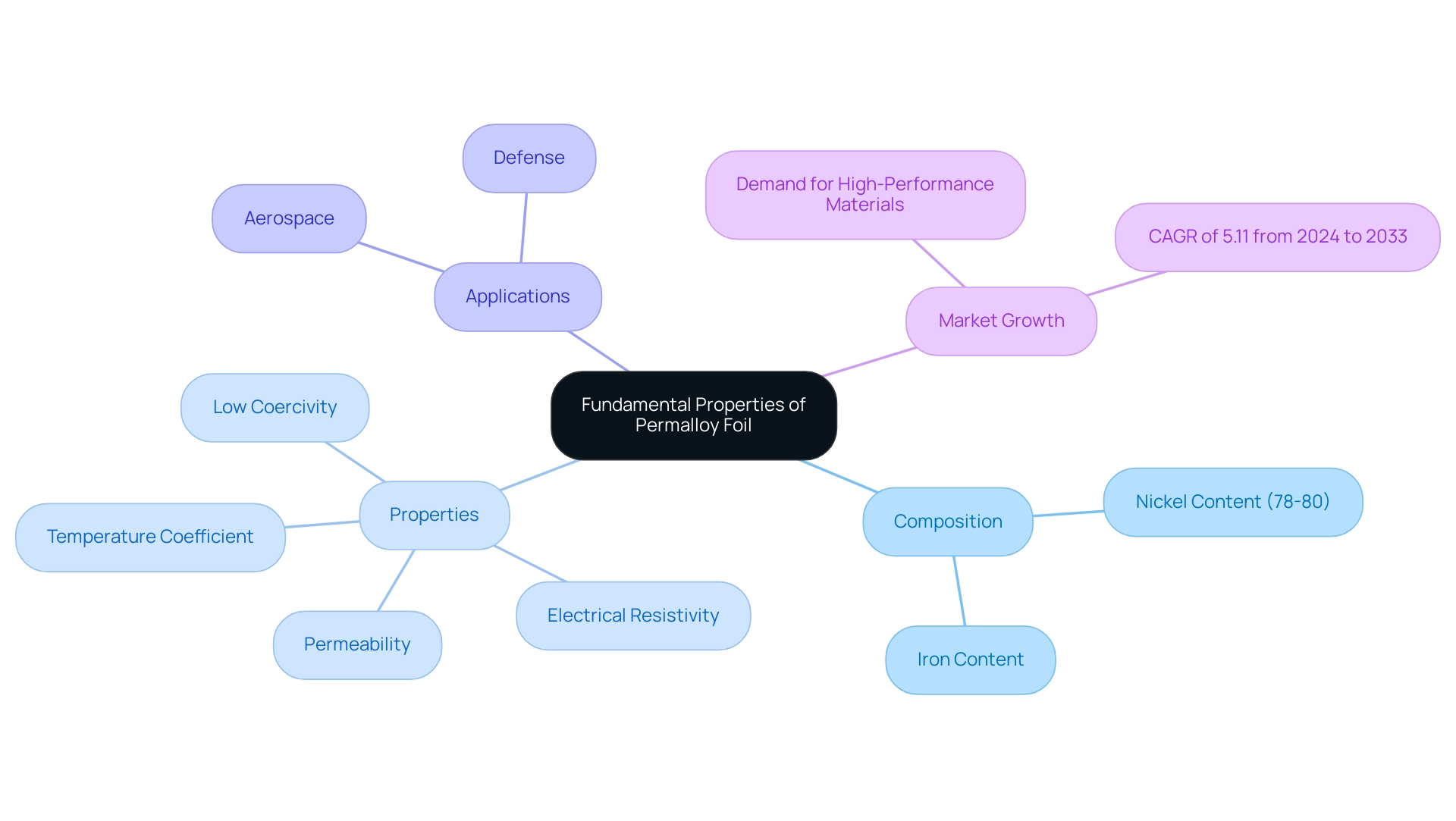
Applications of Permalloy Foil in Industry
An essential material in the electronics and automotive sectors, permalloy foil is valued for its outstanding properties related to magnetism. In the electronics sector, permalloy foil serves as a core element in:
- Transformers
- Inductors
- Shields
These applications significantly enhance their efficiency and overall performance. Its application extends to sensors and read heads in hard disk drives, where permalloy foil’s heightened sensitivity to electromagnetic fields is essential.
In automotive applications, permalloy foil plays a crucial role in the development of:
- Magnetic sensors
- Actuators
These advancements drive improvements in vehicle safety and operational performance. Notably, the effectiveness of permalloy foil in reducing electromagnetic interference positions it as a key player in applications that require robust shielding. Furthermore, the defense industry’s need for magnetic sheets is anticipated to grow, fueled by rising military expenditures and the emphasis on cutting-edge technologies, further highlighting its adaptability and significance.
As Erik Perison, US TPS Business Development Manager at Thermon, indicates, the global alloy sheet substances market is expected to expand at a CAGR of over 5% from 2025 to 2033, demonstrating the growing dependence on this substance in high-tech uses. Additionally, the wider market trends, including the anticipated expansion of the Cellular Broadband Device Market, valued at USD 20 Billion in 2022 and predicted to reach USD 35 Billion, may also affect the need for substances like specialized metal sheets. For procurement managers, understanding these diverse applications and market dynamics is vital for effective negotiations with suppliers, ensuring the acquisition of high-performance materials tailored to specific industry demands.
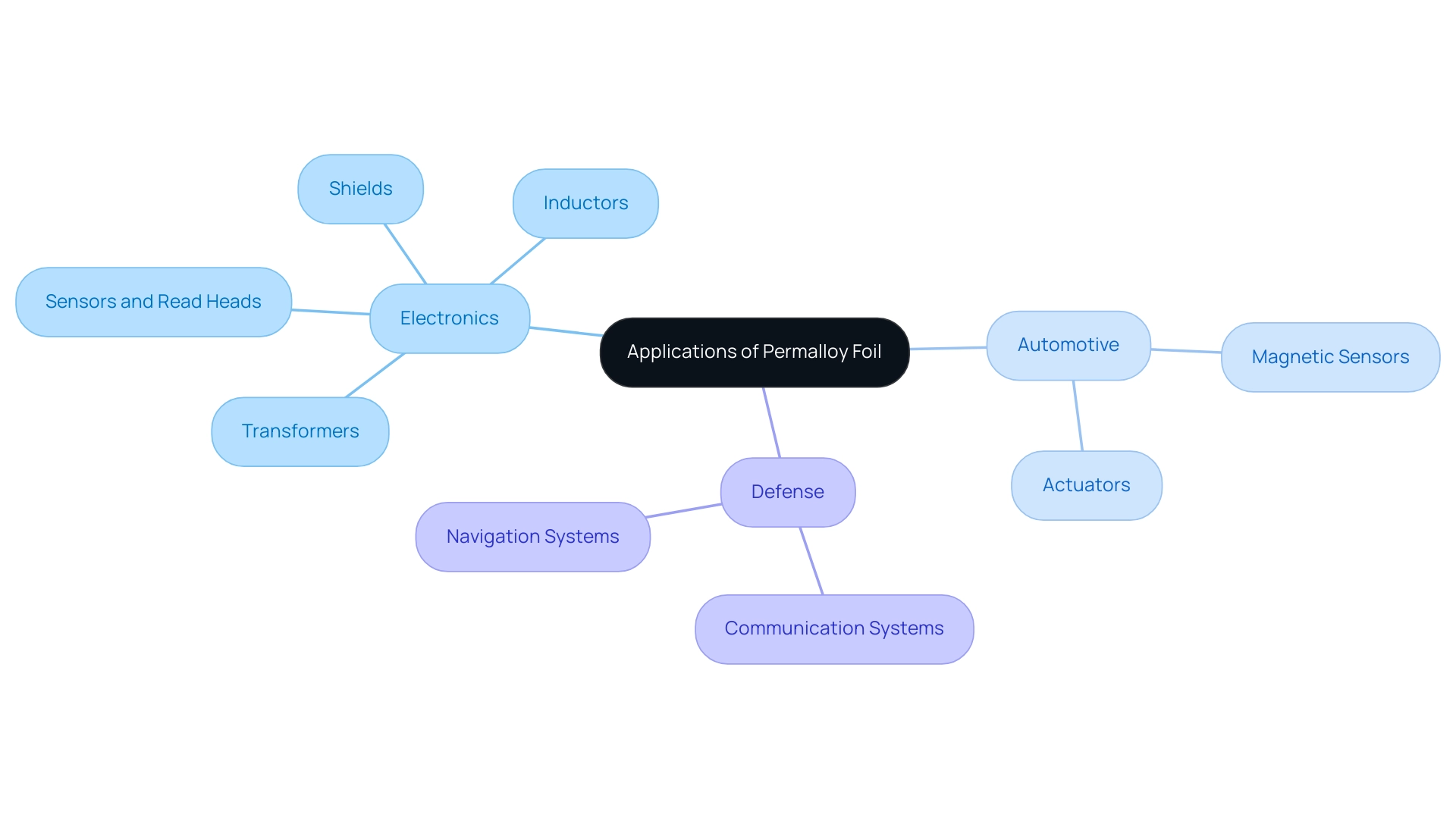
Manufacturing Techniques for Permalloy Foil
The creation of the alloy sheet involves a meticulous process that encompasses:
- Casting
- Rolling
- Annealing
The initial step entails melting the alloy, which is then cast into ingots. These ingots undergo hot rolling to achieve the desired thickness, followed by cold rolling to further refine the foil’s properties.
A crucial element of this manufacturing process is heat treatment, often referred to as annealing, which plays a vital role in enhancing the properties of this alloy. This process alleviates internal stresses within the substance, significantly enhancing its performance characteristics. As highlighted by industry specialists, ‘The annealing process is essential for attaining the highest efficiency in this alloy, making it a crucial step in production.’
For procurement managers, grasping these manufacturing techniques is crucial for assessing supplier capabilities and ensuring that the products meet stringent specifications and quality standards. Furthermore, leveraging experience to negotiate optimal vendor contract lengths can foster stability and adaptability in supplier relationships.
With the worldwide market for ferromagnetic substances, estimated at around $28 billion in 2022, the strategic choice of suppliers who employ advanced manufacturing techniques, such as those producing enhanced alloys known for their improved attraction, becomes ever more vital for sustaining competitive edge.
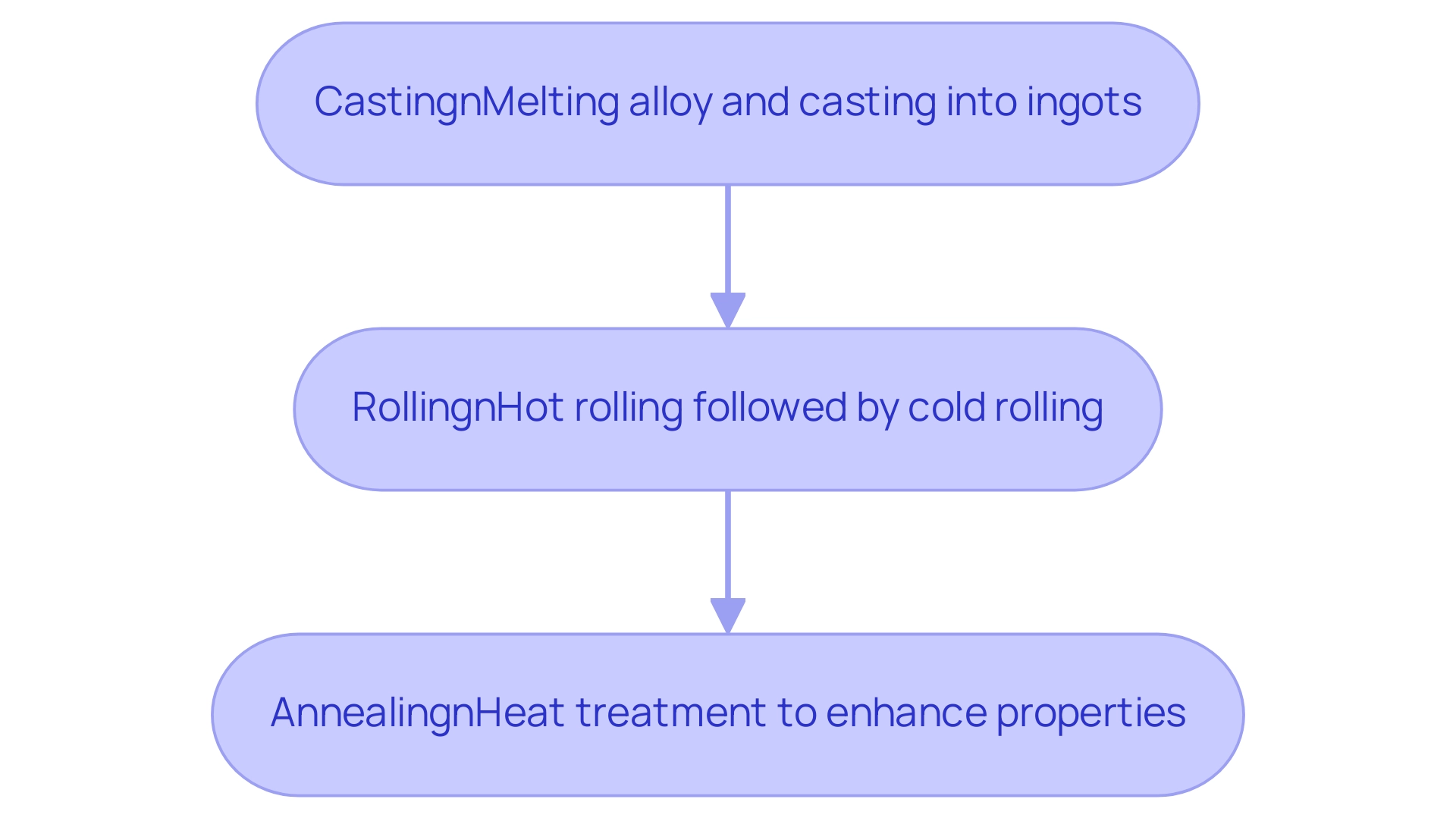
Quality Standards and Compliance for Permalloy Foil
Adherence to global standards, such as ASTM and ISO, is vital for this metal, as these guidelines prescribe the required material specifications and testing protocols. At Domadia, we recognize that following these standards guarantees that our ultra-thin metal sheets not only satisfy performance criteria but also stay appropriate for their intended uses in transformers and shielding. For example, our permalloy foil, composed of roughly 20% iron and 80% nickel, is acknowledged for its high permeability and low coercivity, making this permalloy foil suitable for shielding delicate devices and improving the efficiency of high-frequency transformers.
We also provide a range of ultra-thin metal sheets, including:
- Copper
- Aluminum
- Stainless steel
- Titanium
- Nickel
Each customized for particular uses in sectors such as aerospace, electronics, and medical devices. Key quality metrics to focus on include:
- Magnetic permeability
- Resistivity
- Dimensional tolerances
All of which are essential for assessing the material’s effectiveness in various applications. Our manufacturing process employs cutting-edge techniques and state-of-the-art machinery, ensuring supreme precision and consistency in every batch.
As a procurement manager, it is essential to prioritize sourcing from suppliers like Domadia, who show a commitment to these standards, as compliance reduces risks linked to inferior goods and improves overall product quality. Additionally, recent statistical evaluations require that at least one of ten batches must be assessed if the parameter is set at 2.0, emphasizing the strict standards for quality assurance in metal sheet production. Failure to meet these statistical requirements necessitates manufacturers to conduct thorough assessments of yield strength and elongation, further underscoring the importance of compliance in securing reliable, high-performance substances.
Furthermore, Appendix B details approaches for assessing the mechanical characteristics of rolled items, offering a structure to guarantee that Domadia’s alloy sheet meets the required quality benchmarks.
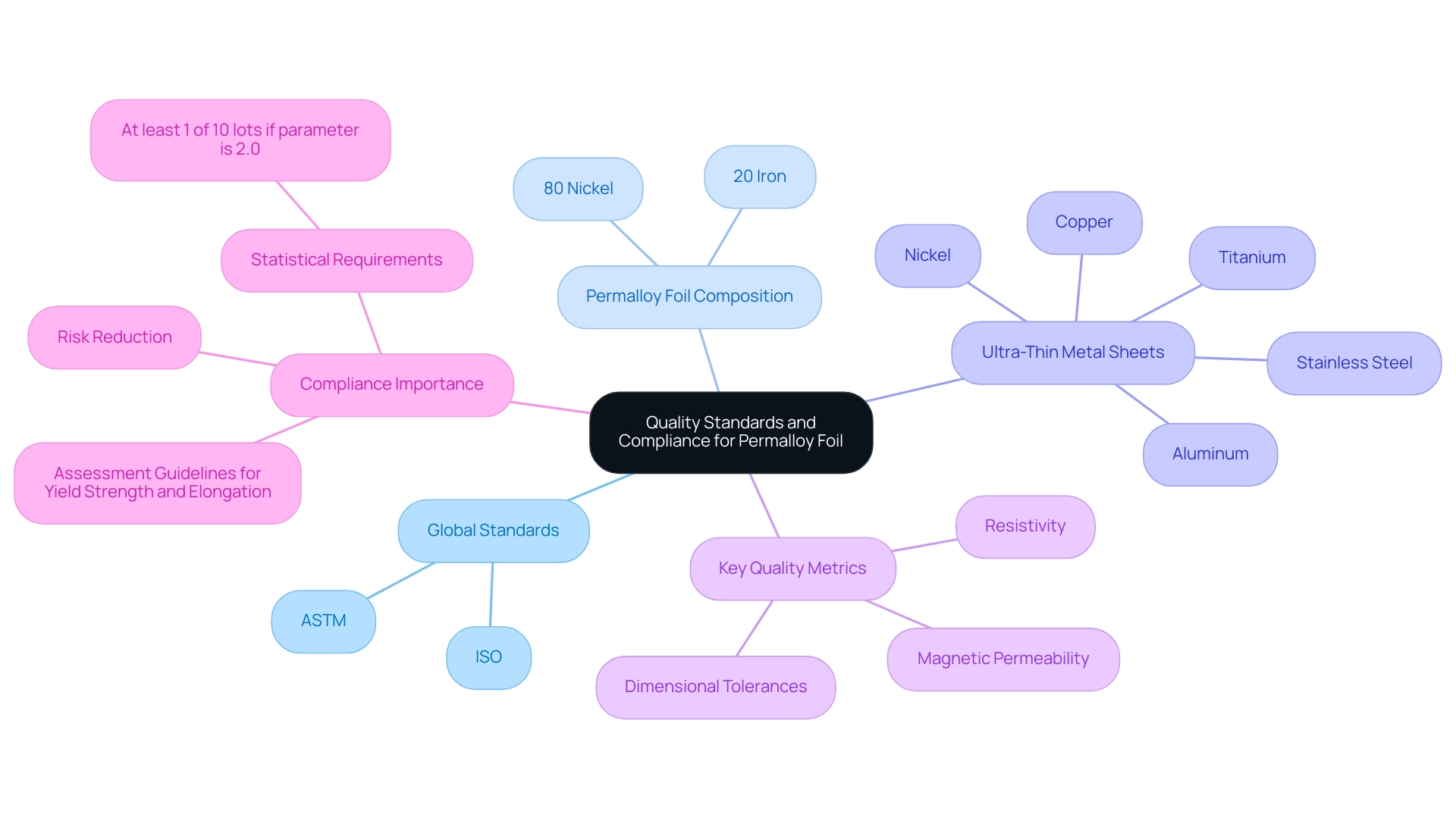
Cost Factors Influencing Permalloy Foil Procurement
The price of the alloy sheet is affected by various elements, including changes in raw resource costs, manufacturing methods, and market demand. Recent trends indicate that nickel prices surged above US$18,000 in the third quarter, largely driven by stimulus measures from the Chinese government aimed at stimulating economic growth. As Aude Marjolin from S&P Global Commodity Insights notes,
At the turn of the year, S&P Global Commodity Insights looks into the trends that will drive metals markets in 2024 and provides price and balance forecasts.
This volatility in nickel, alongside anticipated global nickel production rises in 2024, driven by smelter investments in Indonesia and government incentives, highlights the importance of monitoring raw resources prices as they can significantly affect overall procurement expenses for the company. Additionally, the projected increase in global stainless steel usage of 4.0% in 2024 emphasizes the demand aspect of the cost dynamics of the alloy sheet. Additionally, manufacturing complexity plays a crucial role; as production processes become more intricate, the costs tend to rise correspondingly.
Political changes in the US could also impact sourcing strategies for critical metals like nickel in 2025, making it imperative for procurement managers to remain vigilant regarding market trends. Cultivating relationships with multiple suppliers will facilitate favorable negotiations and help optimize costs while ensuring that quality remains uncompromised.
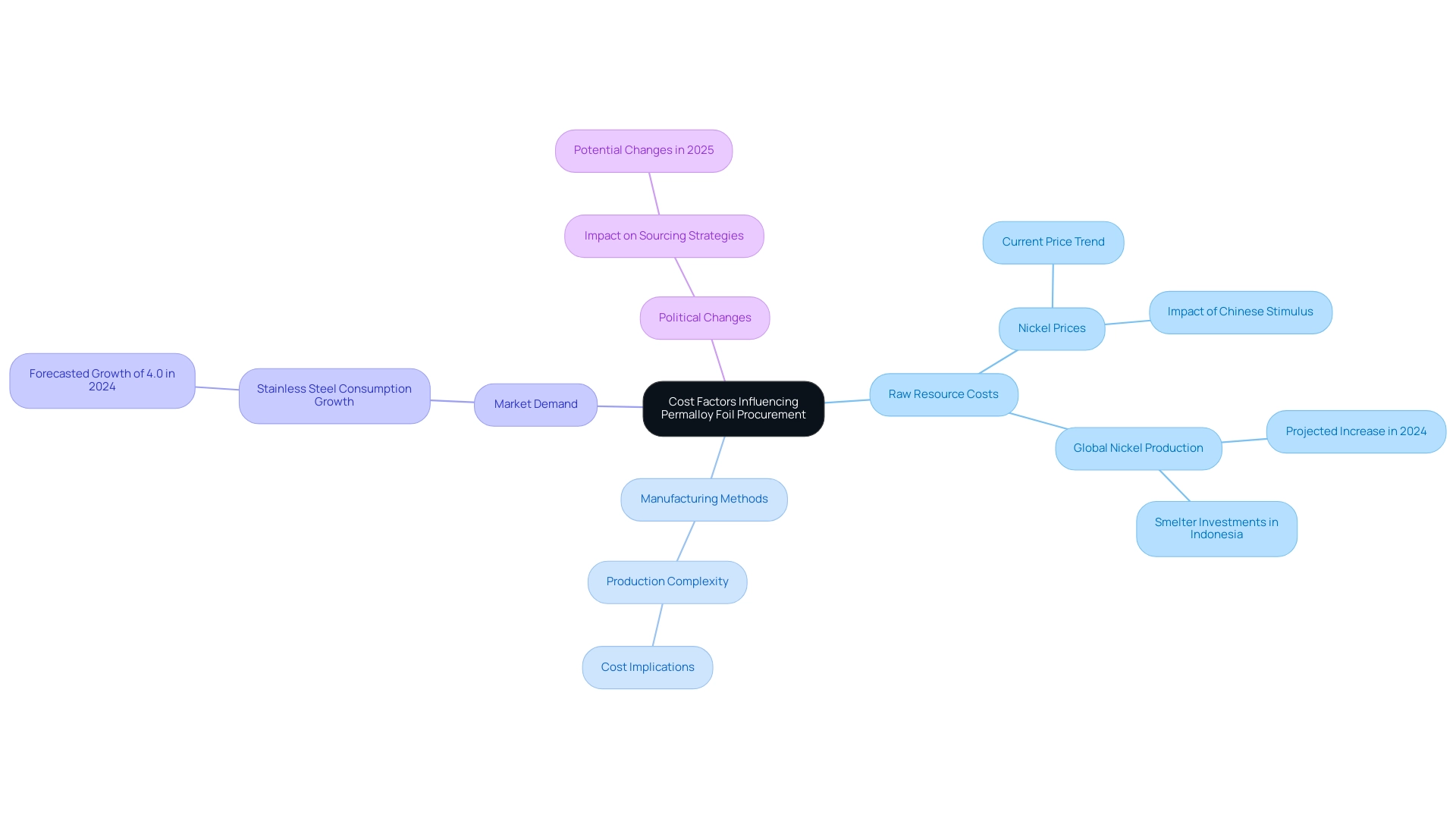
Future Trends in Permalloy Foil Usage
As sectors shift towards miniaturization and improved energy efficiency, the need for high-performance substances is set for substantial expansion. The global market for permalloy foil is projected to expand at a CAGR exceeding 5% from 2025 to 2033, as noted by Erik Perison, US TPS Business Development Manager at Thermon. This growth trajectory suggests a robust future for this essential substance.
In comparison, the Copper & Copper Alloy Foil Market is expected to grow at a CAGR of 6.14% during the forecast period of 2017 to 2023, highlighting the broader trend of increasing demand for advanced materials. Emerging applications in renewable energy technologies—particularly in wind and solar power—are anticipated to fuel innovation in the use of permalloy foil for magnetic shielding and energy conversion. Furthermore, the rapid advancements in electronics, especially within the Internet of Things (IoT) and smart devices sectors, present new avenues for the deployment of metal foil.
In parallel, Mica Tape products, including Mica Insulation Tape and Mica Sheet Tape, are known for their high-temperature resistance and exceptional electrical insulation properties. They are becoming indispensable in critical applications across various industries, such as aerospace and automotive, particularly in the manufacture of fire-resistant cables and other essential electrical insulation systems. A comprehensive case study on the Copper & Copper Alloy Foil Market illustrates how strategic planning can leverage these growth trends.
As these developments unfold, procurement managers should remain vigilant and adapt their sourcing strategies to secure access to materials like permalloy foil and Mica Tape that align with these evolving demands and capitalize on future opportunities.
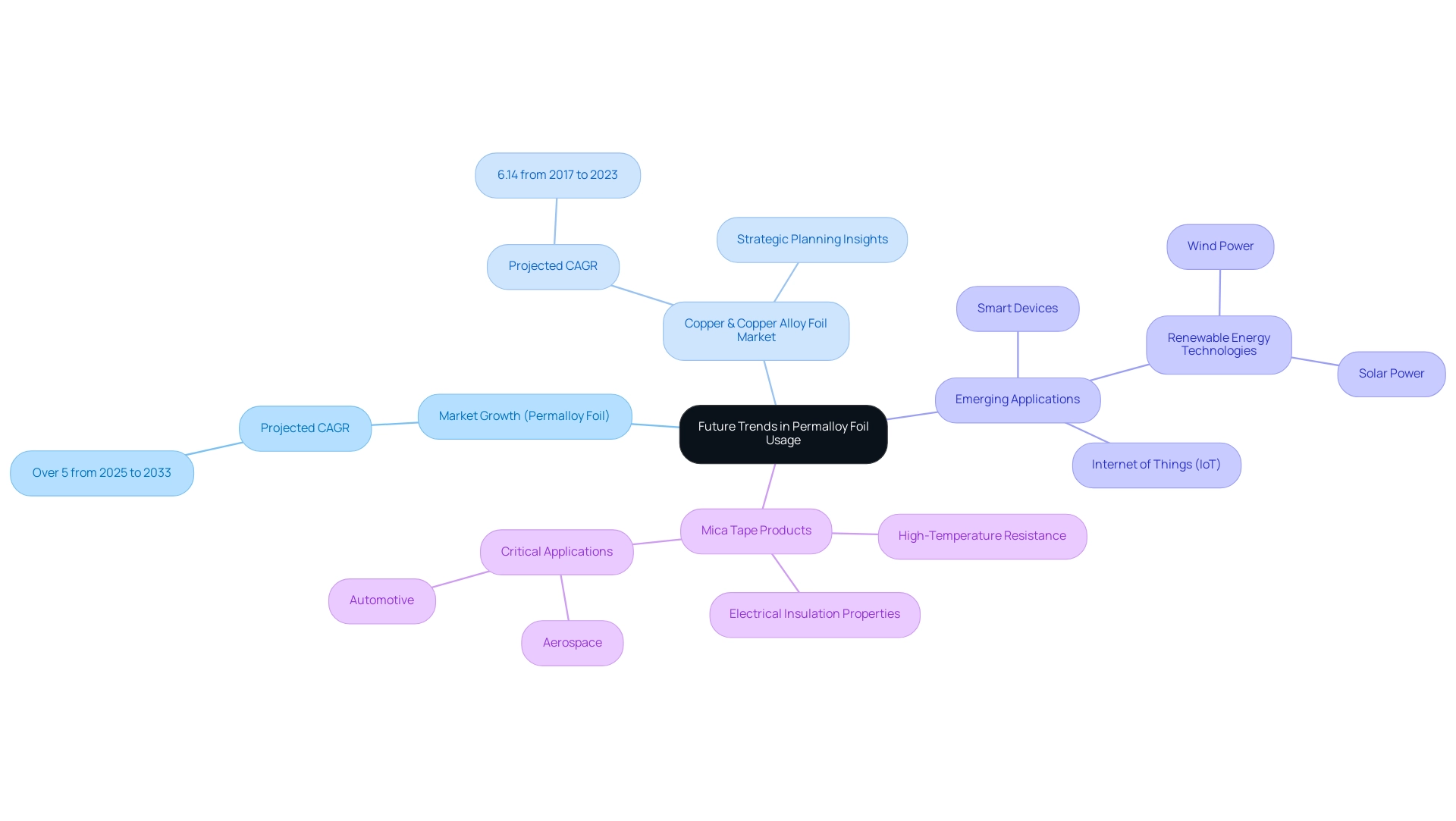
Conclusion
Understanding the multifaceted role of Permalloy foil in materials procurement is essential for professionals aiming to navigate the complexities of modern supply chains. This alloy’s exceptional magnetic properties, stemming from its nickel and iron composition, position it as a critical element across various industries, including electronics, automotive, and defense. As highlighted, the growing demand for high-performance materials is set to continue, driven by advancements in technology and the miniaturization of components.
The manufacturing techniques and quality standards discussed are fundamental to ensuring that procurement managers can source materials that meet stringent performance requirements. The emphasis on compliance with international standards not only mitigates risks but also enhances the reliability of the supplied materials, reinforcing the importance of strategic supplier relationships.
Furthermore, the cost dynamics surrounding Permalloy foil, influenced by raw material fluctuations and market trends, underscore the necessity for procurement professionals to stay informed and agile. As industries evolve and new applications emerge, particularly in renewable energy and advanced electronics, the strategic sourcing of Permalloy will be vital in maintaining a competitive edge.
In summary, equipping oneself with in-depth knowledge of Permalloy foil’s properties, applications, manufacturing processes, and market trends is imperative for procurement managers. By leveraging these insights, they can make informed decisions that not only optimize procurement strategies but also contribute to the overall success of their organizations in an increasingly competitive landscape.


